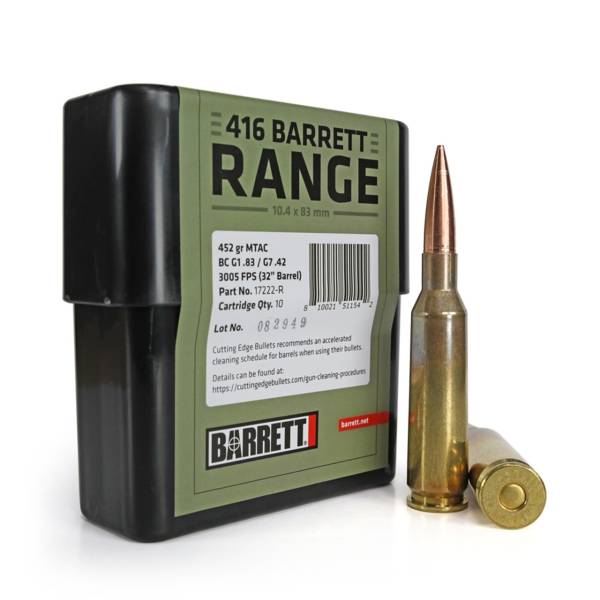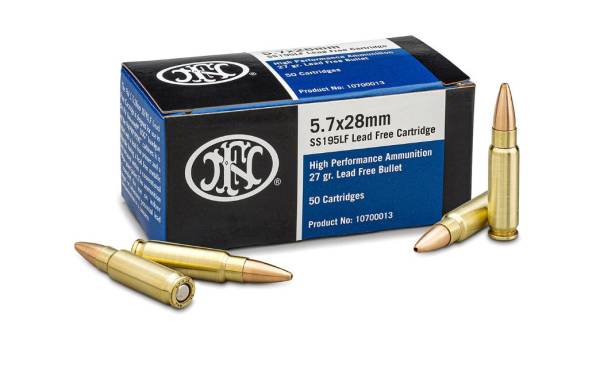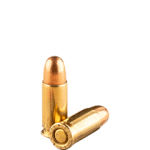Description
The .30-30 (pronounced thirty-thirty) cartridge was America’s first small bore sporting round that used smokeless powder. The round served as a transition between the traditional black powder of the 18th and 19th centuries and the smokeless powder that became popular during the turn of the 20th century and remains so today.
The .30-30 is a rimmed, bottlenecked cartridge that houses a lead, semi-jacketed bullet with a diameter of .308 inch. The .30-30 casing neck measures .330 inch, while the base has a diameter of .422 inch. The case is 2.039 inches long.
The .30-30 round uses a large pistol primer, and per the Sporting Arms and Ammunition Manufacturers’ Institute (SAAMI), can be loaded to a maximum pressure of 42,000 pounds per square inch (psi).
In the standard factory round, the .30-30 cartridge has a bullet that weighs between 150 and 170 grain (gr) and reaches a velocity between 2,000 and 2,390 feet per second (fps). These bullets can reach a muzzle energy between 1,827 and 1,902 foot pound (ft·lb) force.
The round is known as a whitetail deer hunting cartridge with a light recoil. With a 7.5-pound rifle, a .30-30 bullet weighing 150 gr creates only 10.6 ft·lb felt recoil, not too bad when shooters realize that’s only half of what a .30-06 round produces.
The Development of .30-30 Ammo
In 1895, Winchester introduced their .30 Winchester Smokeless cartridge for the company’s Model 1894 lever action rifle. With the head stamp “.30 W.C.F.,” which stood for Winchester Center Fire, the original ammunition featured a 160 gr soft point bullet that reached a muzzle velocity of 1,970 fps. The cartridge held 30 gr of smokeless powder.
Next, Winchester chambered its bolt action rifle Model 54 in .30-30, as well as the Model 55 and Model 64.
Soon after Winchester introduced the cartridge, Marlin Firearms Company, in collaboration with the Union Metallic Cartridge Company (which would eventually merge with Remington), released its Model 1893 chambered in what they called the .30-30, its own version of Winchester’s cartridge. It was the first time the cartridge was called by the name it would eventually be known by.
Using the traditional method of ammunition identification, Marlin named the cartridge by stating the caliber first and the weight of the powder charge second. The result was the designation .30-30 – meaning a .30 caliber bullet and a powder charge of 30 gr.
Savage soon followed suit, building its own .30-30 in the company’s Model 99 rifle.
The rifles and carbines chambered for .30-30 ammunition are some of the most popular deer rifles in America. More than one novice hunter took their first deer with the iconic lever action rifles, and more than one gun collection began with a .30-30 as its originator.
In Mexico and Latin American, the .30-30 is legendary. It’s one of the area’s most prominent firearms and in some rural areas of Central America, the .30-30 is the only long gun people know of.
Uses of .30-30 Ammunition
At first, bullets weighing 160 gr were offered in the .30-30 round, which were intended for use as short-range hunting cartridges for deer and other medium-sized North American game animals.
Because of the ease of use in lever action rifles chambered in .30-30 and its low perceived recoil, the .30 caliber round is often used as an entry-level hunting rifle. While it’s great for novices, it’s also a top choice among those with small physical frames and seniors who prefer a gentler hunting rifle.
But the .30-30 isn’t only for the unexperienced or the weak. The ammunition holds its own against other popular hunting rounds, including .243 and .30-06, and many serious hunters still have a .30-30 hung off their shoulder on the first day of rifle season.
Add in the rifle’s classic look and its nostalgic feel, and it becomes clear why .30-30 rifles have remained popular for well over 100 years.
Issues with .30-30 Rifle Ammo
The .30-30, and the rifles made to fire it, have come under scrutiny over the years. These lever action rifles often feature a tubular magazine, which is why .30-30 ammunition is primarily seen with round nose or flat nose bullets. It’s not about aesthetics, it’s a safety measure.
With pointed nose ammunition, like what’s commonly seen in .223 Remington or .308 Winchester, there’s a risk of the hard bullet point engaging the primer of the cartridge in front of it, due to the tubular magazine.
While rare, it does happen, most often from the recoil after firing the weapon, resulting in a dangerous double fire. These types of misfires can also occur when dropping a loaded weapon or falling with the firearm in hand. With this type of jar, a bullet can jam forward, its nose hitting the primer hard enough, it fires the impacted round, potentially causing serious injury to the shooter or bystanders and destroying the firearm.
The .30-30 Ammunition as a Hunting Cartridge
The .30-30 is the standard in American whitetail deer hunting and is used as an indicator of ability, with shooters often talking about a firearm as being in “.30-30 range” or “.30-30 class.” These statements indicate that the cartridge in question can take down medium to large game, such as whitetail deer and black bear, at a moderate range, just like the .30-30.
Although many deer have been harvested with a .30-30 rifle and its full range of ammunition, modern recommendations suggest opting for ammo with a bullet weight of 170 gr to ensure efficiency and a humane kill.
It’s also important to mention that there are range limits to .30-30 cartridges. The .30-30 is not a hunting rifle to use when hunting long-distance in the Rocky Mountains. It functions and performs much better in the Appalachia, where hunters are in thicker woods and dense forests.
In most cases, the .30-30 bullet can’t maintain a lethal velocity past 200 yards, especially when it comes to wooded hunting scenarios. These cartridges perform best at the 50 through 150 yard range, which is perhaps why the .30-30 hunting rifles are so popular in the Northeast, where deer hunting often occurs in environments where it’s difficult to spot a deer beyond 100 yards, let alone having a feasible shot.
Beyond whitetail deer and black bear, .30-30 rifles can harvest caribou and pronghorn without issue. Some hunters hold the opinion that even moose can be successfully harvested with a .30-30. Although all agree the .30 caliber rifle can’t be used at a long distance, some argue that the number of moose harvested with the gun indicate its ability without question. Even so, certain places, including Norway, Sweden, and Finland, have minimum energy standards set for moose hunting that the .30-30 just can’t reach.
While the .30-30 can handle some of the country’s large game, the round isn’t effective for varmint. It lacks the short-range velocity and accuracy necessary to ethically kill these animals.
Types of .30-30 Ammo
With the popularity of .30-30 rifles and ammunition, it’s no surprise all major domestic ammunition manufacturers make ammo in the caliber, including Federal, Winchester, and Remington.
Today, factory bullets commonly weigh between 110 and 170 gr, although the 170 gr round is, by far, the most popular. Soft point, followed by hollow point bullets, are the most common configuration. The soft point ammo serves a dual purpose in a hunting round – the open lead of the soft point allows for greater expansion than that of a full metal jacket (FMJ) round, but gives a deeper penetration than hollow points of the same weight.
Beyond these common rounds, shooters can also buy .30-30 ammo in configurations that include:
Hollow soft point (HSP): Although it’s been mostly replaced by modern ammunitions, some hunters still prefer HSP rounds, which feature a semi-jacketed hollow point bullet that has an exposed, soft point.
Pointed soft point (PSP): A semi-jacketed bullet that features an exposed, pointed tip, these rounds are often used in bolt action .30-30 rifles, single shot long guns, and the few revolvers chambered to the caliber.
Nosler Partition: A work of modern ballistic technology, the Nosler Partition acts as two fused bullets and allows hunters to harvest larger game, bringing the .30-30 into a hunting demographic in which it previously couldn’t compete.
Many popular brands produce premium hunting cartridges in .30-30, such as Winchester’s Power Point (PP) line, Barnes Bullets’ Triple-Shock X (TSX), and Federal’s 30-30 Fusion ammo.
The effective range of .30-30 ammo has historically been 200 yards, but new technology – specifically the Hornady LEVERevolution cartridge – has expanded the original means of the round. Hornady’s speciality cartridge sends a bullet that retains more than 1,000 ft·lb of energy as far out as 300 yards while retaining a lethal velocity.
In addition, LEVERevolution ammunition eliminates the previously mentioned safety risk of using pointed cartridges in a loaded lever action .30-30 rifle. In lead-tipped bullets, the tip can hit the primer in front of it, causing the cartridge to fire.
But with the Hornady round, the polymer tip is soft and flexible and it deforms under compression, making it unable to fully impact the primer. Once the compression releases, the bullet regains its form.
This type of ballistic technology changed the .30-30 from a firearm with a range of barely 200 yards to a rifle that could harvest deer, and maybe even slightly larger game, at 300 yards. This remarkable development, after a century of being a nothing more than a deer cartridge, is astonishing.
Although factory ammunition is readily available, both in small gun stores and online retailers, there are still many shooters who opt to handload their own rounds. Not only does this allow for cheap .30-30 ammo, but handloading improves on the round’s ballistics. According to many reloaders, .30-30 wildcat cartridges are the only way to reach the ammunition’s full potential.
Other Names for the .30-30 Cartridge
Like many other cartridges, the .30-30 is known by various names. Some of the most common include:
.30-30
.30-30 Winchester
.30-30 Win ammo
.30-30 WCF (Winchester Center Fire)
.30-30 Smokeless
.30 Winchester
.30 WCF
7.62x51R
Shooters may also see the ammunition as 30-30, without the period in front of the number. While the meaning is relayed without issue, it’s grammatically wrong. The first 30 represents the measurement of the bullet’s caliber, which is .30 (really .308) inch. Because this is a measurement, it should include the decimal point.
Firearms Chambered in .30-30
The .30-30 has been chambered in several different types of guns, including long rifles and carbines, although without question, the lever action rifle is the most popular. The Winchester Model 94 as well as the Marlin Model 336, are two famous examples of high-quality, long-lasting .30-30 lever action rifles.
Many of these classic lever action rifles featured iron sites. And although today’s hunters like their modern gadgets, sometimes an iron site is exactly what a shooter needs. This is especially true at short-range distances and even more so in wet weather, regardless if it’s rain or snow.
Savage Arms offered the .30-30 round with its pump action Model 170C and with its bolt action Model 340. Thompson Center chambers .30-30 in a single shot pistol, and Magnum Research sells a semi-custom wheel gun based on its BFR revolver in .30-30.
Independent of the chosen firearm, the .30-30 was and remains a great cartridge for hunting any game of medium to large size. Many hunters are appreciative of the mild recoil from this potent round, as well as the compact rifles that have been chambered for the caliber (since they’re lightweight and simple to maneuver in a country with heavy brush). For these reasons and more, the .30-30 cartridge will likely remain popular and highly used for another hundred years.
FAQ
What is 30-30 ammo?
The .30-30 Winchester round, which is commonly referred to as the “thirty-thirty,” is a small bore sporting round popular in the U.S. for medium-sized game and whitetail deer. It was the first American round to use smokeless powder and represents the transition from black powder 19th century ammunition to modern, 20th century ammo. This caliber features a rimmed, bottlenecked cartridge with a .308 inch diameter bullet.
What is the effective range of 30-30 ammo?
The .30-30 cartridge does have range limits. For medium to large game, the round does not maintain a lethal velocity beyond 200 yards and is most effective between 50-150 yards. It is, therefore, a more popular option for those hunting in Appalachia instead of those in the Rockies. The .30-30’s range limits also apply on the short end. It’s not an effective varmint round, as its short-range velocity and accuracy doesn’t always lead to an ethical kill.
What can you hunt with 30-30 ammo?
The .30-30 cartridge is appropriate for most North American medium-sized game and smaller large game. It’s often used to harvest whitetail deer, black bear, caribou and pronghorn. Rifles chambered in .30-30 are often used by hunters east of the Mississippi, where hunting conditions demand a range under 200 yards. In the Rocky Mountains, the range of the .30-30 doesn’t allow for long distance shooting.
What is the best grain 30-30 bullet to use for deer hunting?
The ideal .30-30 bullet grain for deer hunting depends on a variety of factors, but the 170 grain is the most popular. Most hunters opt for soft point or hollow point configurations, as these types of bullets allow for greater expansion than full metal jacket rounds, and create more stopping power.
What size bullet is the 30-30?
The bullet size for the .30-30 depends on the type of bullet. Traditional jacketed rounds feature a .308 inch diameter bullet, while cast lead projectiles measure at .309 inch in diameter.





